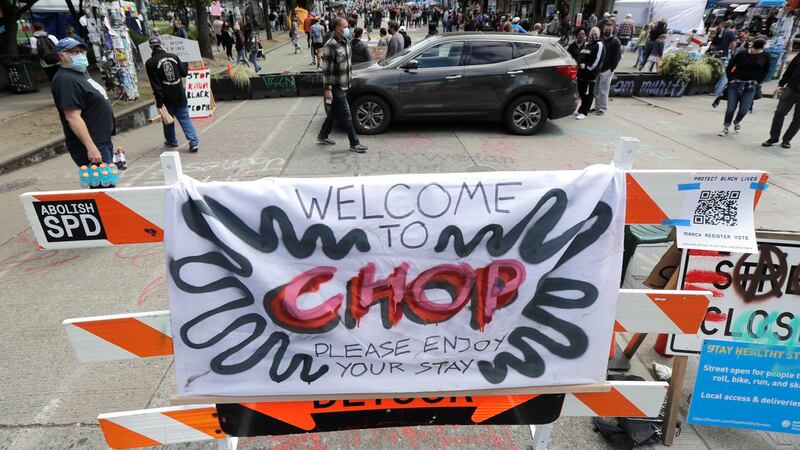SEATTLE — Seattle’s self-declared autonomous zone, now being called “CHOP” or Capitol Hill Occupied Protest, could soon have a smaller protest area if the city gets its way.
On Sunday, city leadership from the Seattle Fire Department, Seattle Department of Transportation and Seattle Public Utilities met with CHOP representatives and representatives of business and property stakeholders. The discussion included options for reducing the footprint of the protest zone, which currently stretches several blocks near Seattle Police Department’s east precinct.
The city said it’s working to balance the rights of protesters with the proposed changes that would address the need for first responders to once again drive emergency vehicles through the area while opening access for businesses and people who live there.
“We’re trying to work through different plans so if there is a fire, medical emergency, we’ll be able to get in,” said Seattle Fire Chief Harold Scoggins. “There have been incidents inside the area and we’ve been communicating with the teams and working at handoff points and so that’s been our plan up to this point but what we know is that’s a limited plan.”
One CHOP representative expressed a willingness to consider a new footprint for the protest during Sunday’s discussion but expressed safety concerns about allowing drivers into the area, fearing it could lead to deliberate attacks on protesters.
Ron Amundson, who owns properties inside the Capitol Hill Occupied Protest area and attended Sunday’s meeting with the city and CHOP representatives, told KIRO 7 he supports the protests but said safety issues need to be addressed.
"That’s the main concern right now is not having the ability to respond to a life-threatening emergency,” said Amundson.
Amundson said he has been in touch with other property and business owners in the area about their concerns too.
"Many businesses are afraid to open,” said Amundson. "Maybe without having control of the situation, there’s just a lot of uneasiness and unknowns.”
Last week, KIRO 7 spoke with several neighbors living inside the protest barriers who said they were happy to see police gone from the area after several clashes with protesters that involved the controversial use of tear gas and crowd control measures.
Amundson said he’s heard some people living inside the protest zone are now leaving.
“Was told eight were leaving one property and many others are leaving the other properties,” said Amundson. “They’re afraid and they don’t have access that they should have and they just want out.”
CHOP security representatives said on Sunday that they were not preventing anyone from coming or going from the occupied area. Another protester stationed at one of the barricades said demonstrators planned to occupy the area until the city meets their reform demands, which Fire Chief Scoggins said Sunday were still being discussed but had already led to some police policy changes and reviews.
“It needs leadership and organization and I think we can do it,” said Amundson. “I think that what we don’t want to do is allow bad actors to hijack the protest with their agendas; we don’t want this to end badly.”
© 2020 Cox Media Group








